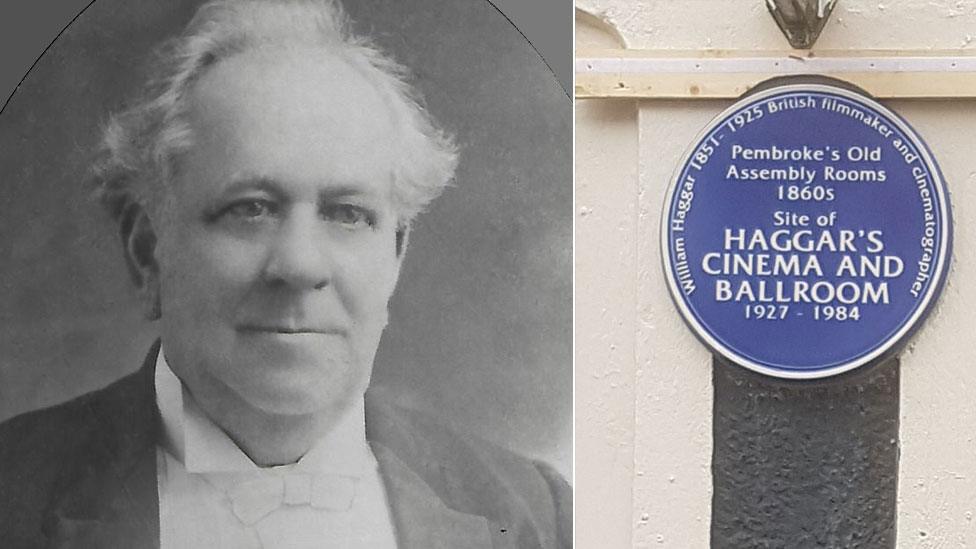Movie 'chase scene' pioneer honoured with blue plaque
- Published

William Haggar's blue plaque was unveiled in Pembroke on Wednesday
A film pioneer whose work paved the way for some of Hollywood's most dramatic car chase scenes has been honoured with a blue plaque.
William Haggar's work in the late 1800s was a forerunner to pursuits such as the one in Twin Town.
He originally showed silent movies around Wales and started using props to add in action scenes.
The plaque was unveiled at a former cinema in Pembroke that he founded, which is now Paddles nightclub.
His granddaughter Vicki said: "In 1898 there were very few films to show, and almost all of them were quite mundane 'documentary' movies of the fire brigade heading out to a call or a train coming out of a tunnel.
"Fortunately for William, his background was in travelling theatre so he decided to fill the gap by using the props and acting skills he'd learned to make his own films."
Vicki Haggar (2nd left) attended the unveiling
He was born in Essex in 1851 and served apprenticeships as a shipbuilder and watchmaker before his marriage to Sarah Walton in 1870 opened up a new career for him.
She was the daughter of a theatre impresario who toured south Wales.
Joining the entertainment industry, Haggar spent 拢80 on his first projector, taking 拢15 on the door on his first night in Aberavon.
Using props and a camera he developed a technique which is used in films to this day.
While his 1903 film "Desperate Poaching Affray" was only three minutes long, the pursuit of poachers through a wood ushered in one of the earliest use of panning shots.
Editing techniques also saw the chase exiting the right side of the screen to re-emerge on the left, which form the basis of movie chases to the present day.
These include pursuits in Steve McQueen movie Bullitt and the scene from Swansea movie Twin Town that showed the Lewis twins being pursued in a stolen BMW.
Haggar went on to direct and produce more than 30 silent movies and established a chain of cinemas across south Wales.
- Published7 October 2019
- Published5 July 2019
- Published18 February 2017